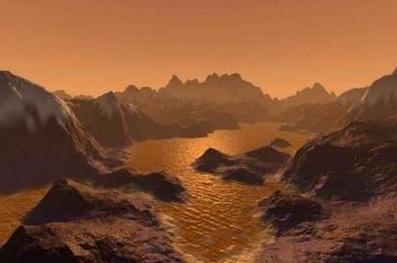Cassini spacecraft finds Titan may have hidden ocean
(Xinhua)
Updated: 2008-03-21 15:00
Updated: 2008-03-21 15:00
WASHINGTON -- NASA's Cassini spacecraft has discovered evidence that points to the existence of an underground ocean of water and ammonia on Saturn's moon Titan.
The findings, made using radar measurements of Titan's rotation, will appear in the March 21 issue of the journal Science.
|
|
"With its organic dunes, lakes, channels and mountains, Titan has one of the most varied, active and Earth-like surfaces in the solar system," said Ralph Lorenz, Cassini radar scientist at Johns Hopkins University. "Now we see changes in the way Titan rotates, giving us a window into Titan's interior beneath the surface."
Scientists used Cassini's radar to collect imaging data during 19 separate passes over Titan between October 2005 and May 2007. The radar can see through Titan's dense, methane-rich atmospheric haze, detailing never-before-seen surface features and establishing their locations on the moon's surface.
Using data from the radar's early observations, scientists established the locations of 50 unique landmarks on Titan's surface. They then searched for these same lakes, canyons and mountains in the reams of data returned by Cassini in its later flybys of Titan.
They found prominent surface features had shifted from their expected positions by up to 19 miles (about 30 km). A systematic displacement of surface features would be difficult to explain unless the moon's icy crust was decoupled from its core by an internal ocean, making it easier for the crust to move, said the scientists team.
"We believe that about 62 miles beneath the ice and organic-rich surface is an internal ocean of liquid water mixed with ammonia," said Bryan Stiles of NASA's Jet Propulsion Laboratory.
The study of Titan is a major goal of the Cassini mission because it may preserve, in deep-freeze, many of the chemical compounds that preceded life on Earth. Titan is the only moon in the solar system that possesses a dense atmosphere. The moon's atmosphere is 1.5 times denser than Earth's.
"Further study of Titan's rotation will let us understand the watery interior better, and because the spin of the crust and the winds in the atmosphere are linked, we might see seasonal variation in the spin in the next few years," said Lorenz.
|
||
|
||
|
|
|
|

